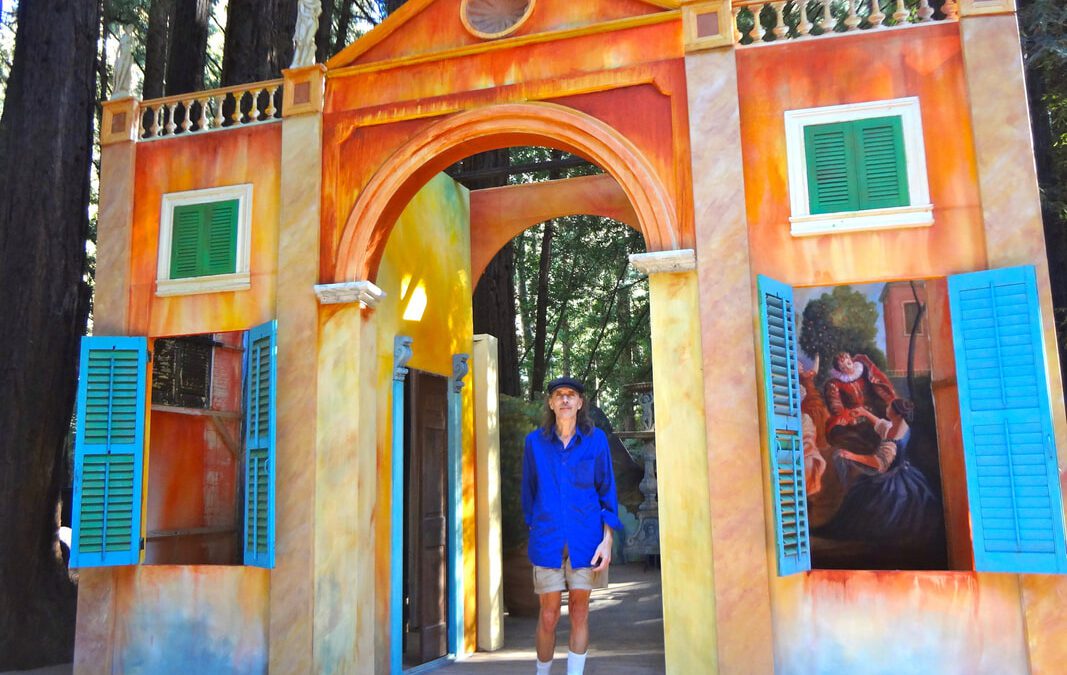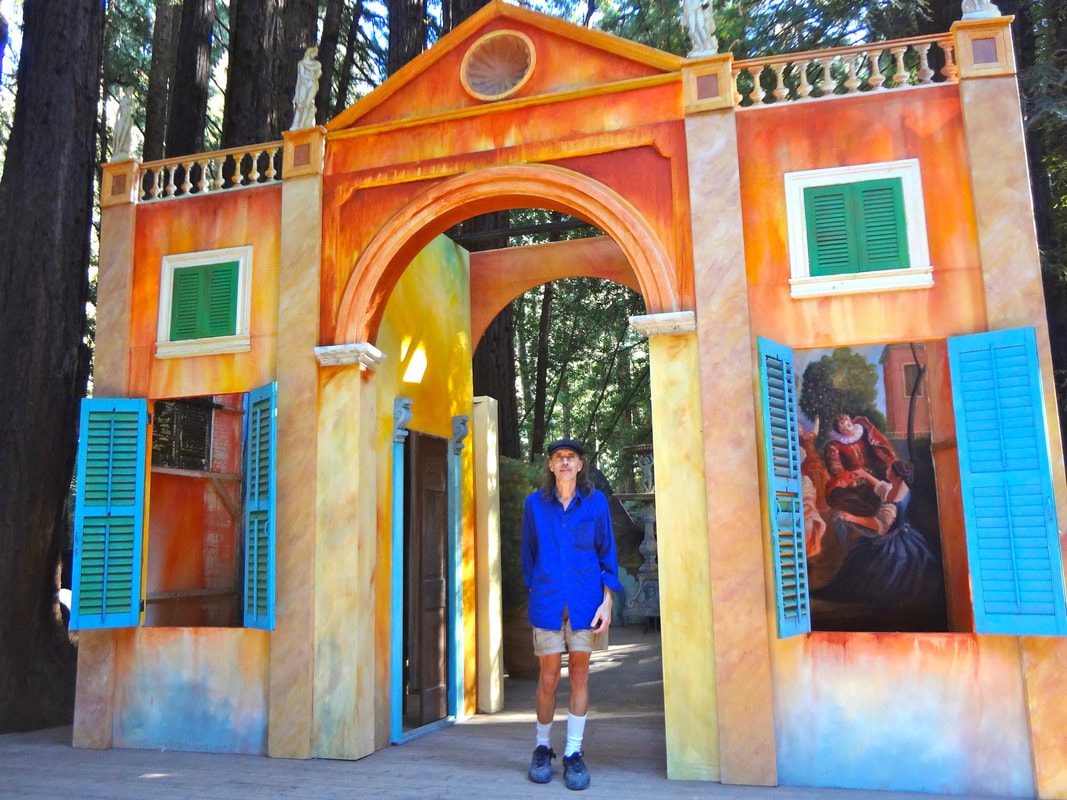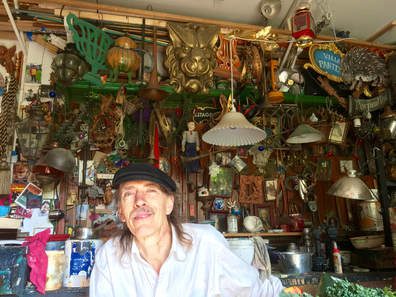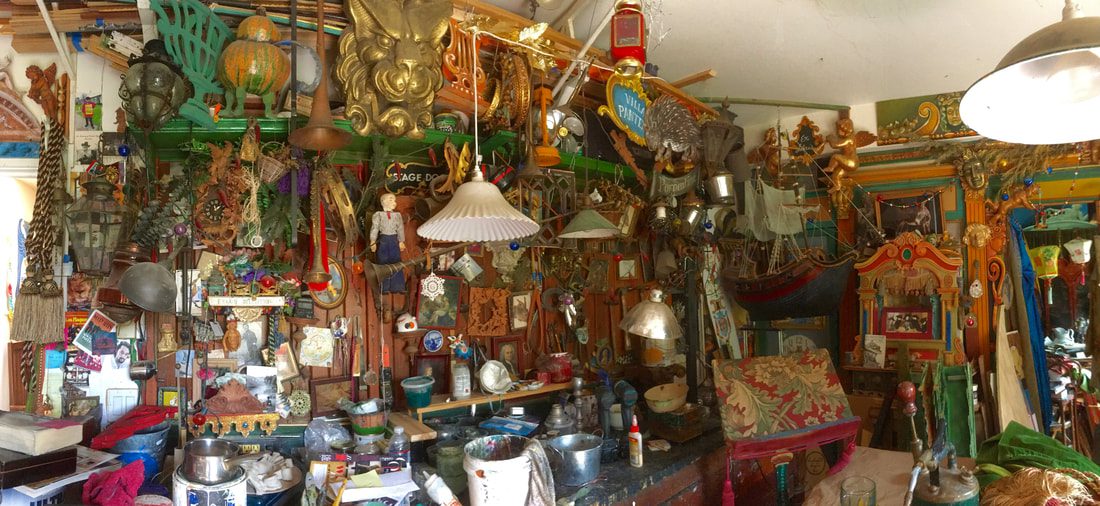The Mill Valley native’s creative workspace is even more abuzz than usual right now as he prepares for another show. But instead of readying the set pieces for a production of the Throckmorton Theatre or the Curtain Theatre, Coleman is the honored artist at the 61st Mill Valley Fall Arts Festival, set for Sept. 16-17 in the redwood grove of Old Mill Park.
Coleman, a 2002 Milley Award winner and the cofounder of the Curtain Theatre in 2000, says he’s excited to be part of the festival again, but he’s also a bit anxious about exhibiting a retrospective of his set designs, art that is far more complex and unwieldy than traditional fair fare like paintings and photographs.
“A lot of them are quite large,” he says. “Many of them connect with the theater in some way, and there are a number of special props that show off the different sizes and scale. And there is one in particular that will make many of them seem very small!”
As he readies himself for MVFAF, we sat down with Coleman to chat about his life in the theater, his influences and inspirations and his feverish preparation for the festival.
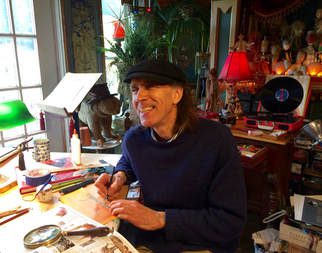 Steve Colmen in his work studio. Courtesy image.
Steve Colmen in his work studio. Courtesy image.
Steve Coleman: I’m still puzzled at how I got into this whole world of set design (laughs). I used to do these little miniatures like maquettes and architectural models. I took drama classes at College of Marin, and then I went to acting school in San Francisco so that I could learn both sides of the production. My biggest influence, though, was a teacher I had in San Francisco named Wendell Phillips, who had been with the Group Theatre in New York City and was just this grand old man of the theater. He just knew everything.
EMV: So you started with miniatures when you were a kid?
SC: Yes, I built little theaters, which is very funny to think about.
EMV: Were your parents an influence in terms of learning getting into designing and building things?
SC: My mom was an art major at college but she never did much with it. My dad used to draw with us as kids and help us make characters and that sort of things. He was a strong influence in that way.
EMV: What was the medium as a kid?
SC: Clay, mostly.
EMV: Now I would imagine it’s a little bit of everything.
SC: Pretty much!
EMV: What’s your process of creating a set design when you tackle a new project here at the Throckmorton?
SC: Besides reading the play and familiarizing myself with the text, I just sort of plumb the depths of the director and try to find their vision and what they want. Then you just take off and do the research and imagine it as if you were in the production. The director dictates the style and whether or not they are reimagining the play in a certain way. That directorial vision is the most important thing. Then I dive in from there.
EMV: Did you have a sense of what you wanted to do for this special exhibition at the Fall Arts Festival?
SC: I haven’t done the festival for years. I have shown there before but because I’m always so busy here, I just sort’ve stopped applying. So I’m excited. This will be sort of a retrospective of stuff that I’ve created. Some of the work are the scenes I’ve made for the library cases in Mill Valley and Larkspur over the years. I have these little characters that I’ve created scenes for and they’re used to tell a story.
EMV: Tell me about the poem that inspired you for this exhibit? Williams Butler Yeats’ “Sailing to Byzantium”?
SC: Yes. It’s not so much the whole poem itself, just the name and what its says. When I was thinking of some of the pieces I worked on, it was fun to think of a vision of another world. It was more about thinking of a place that we could go to if we could imagine ourselves there. This work is perhaps the logical extension of the imaginary worlds we created as children growing up in the hills and canyons overlooking Old Mill Creek. In our imagination, the little twig boats we placed in the unchartered waters of Old Mill Creek might somehow reach the far pavilions of distant cities yet undreamt of. We are all dreamers of a better world with visions of the world that might be or might have been.
EMV: Tell me about the “artisan’s grove” where you’ll be showing your work. It’s near the Children’s Grove?
SC: Yes, it’s a separate grove nearby, closer to the creek. It’s a part of the park where there used to be a footbridge to Molino. I wasn’t really conscious of this little particular grove but there are a number of stumps from ancient trees that are there. And they are just fascinating. The burls and the faces in them. All of the spirits of the woods are there.
The 411: Mill Valley native and Throckmorton Theatre and Curtain Theatre set designer Steve Coleman is exhibiting a retrospective of his work at the 61st Mill Valley Fall Arts Festival, set for Sept. 16-17 in the redwood grove of Old Mill Park. The exhibit space is sponsored by Good Earth Natural Foods. Here’s a look inside Coleman’s workshop upstairs at the Throckmorton Theatre:

